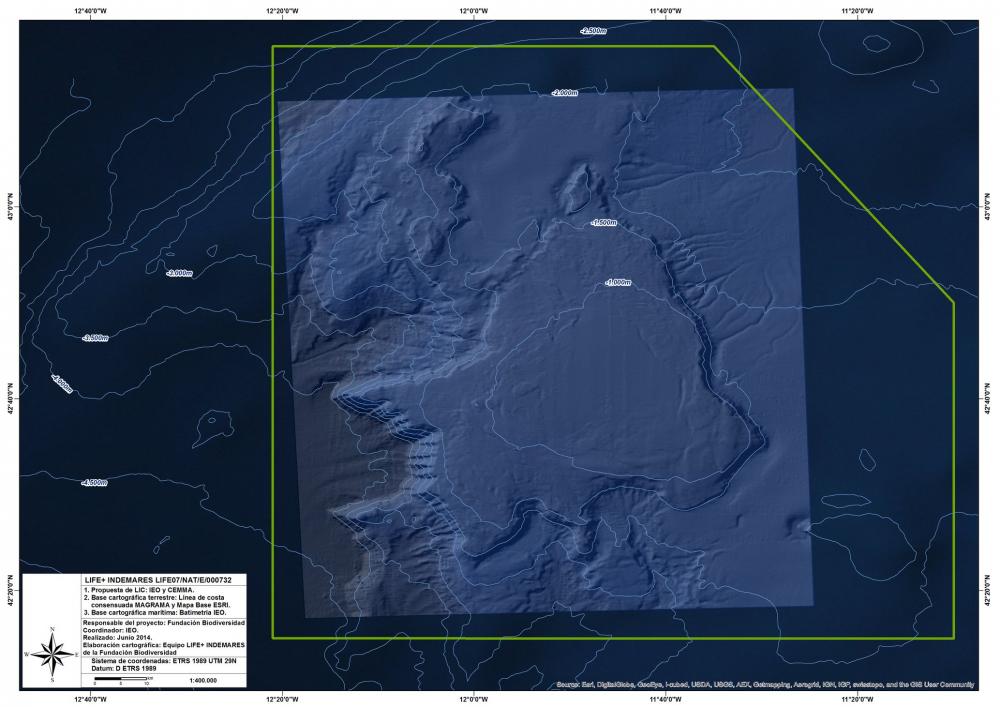180 kilometres off the Galician coast, this mountain rises from the sea floor. Its summit is located between 650 meters and 1500 meters below the surface of the sea, and it is surrounded by abyssal platforms more than 4,000 meters deep. The relief of this seamount modifies bottom currents, causing nutrient-rich deep water to ascend. This enrichment of the waters on the bank allows high productivity, which together with the quantity of environments present on the slopes, creates a true oasis of biodiversity in the middle of the sea, favouring the presence of various species of cetaceans, marine turtles and seabirds.
TYPES OF NATURAL HABITATS AND SPECIES COMMUNITY INTEREST
Reefs (Habitat 1170)
Reefs are hard, compact substrates on smooth, solid bases that rise from the sea floor. They can shelter benthic communities of animals and seaweeds, as well as coralligenous concretions. This type of natural habitat is represented in the SCI by the cold water corals Lophelia pertusa and Madrepora oculata, and by communities of black coral, bamboo coral and gorgonian sea fans. These species are accompanied by a very diverse fauna of sponges, gorgonians and other types of corals.
Bottlenose dolphin (Tursiops truncatus)
Cosmopolitan species typical in tropical and temperate regions, although it may also be found in relatively cold waters. It is characterised by being very gregarious. Its very varied diet includes hake, sea bream, mackerel, octopus, squid, and prawns, among other marine animals. This is the second most abundant cetacean species on the Galicia Bank after the striped dolphin (Stenella coeruleoalba).
Loggerhead turtle (Caretta caretta*)
*High-priority species
(Threatened in the Mediterranean (IUCN Red List 1996))
Cosmopolitan species found in tropical and subtropical waters. Solitary and omnivorous, its diet includes crustaceans, fish, molluscs, seagrass and jellyfish. This species has been detected in the waters off the Galicia Bank.
Seabirds
The Galicia Bank is a very unique area for birds. Its high productivity, combined with its remote location, attract a great number and diversity of oceanic species of seabirds, some of which are very difficult to see in more coastal waters. Among them are several threatened species, which has led to the zone being declared a SPA. The protected species include the band-rumped storm petrel (Oceanodroma castro) , a small seabird; this is the only place it is regularly found in the waters around the Iberian Peninsula.











